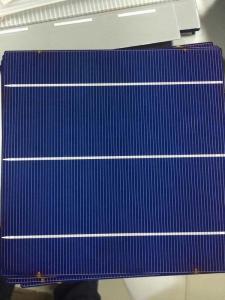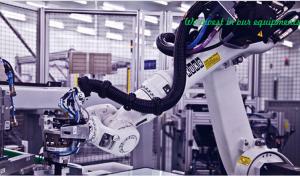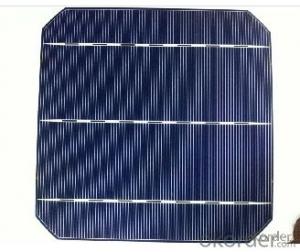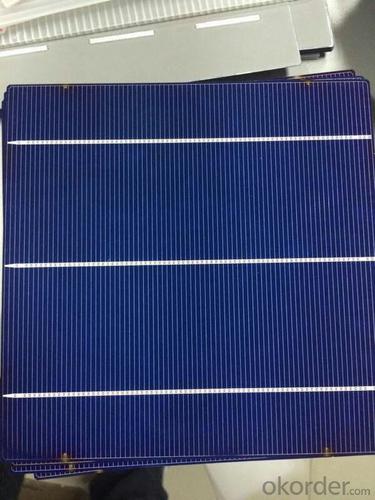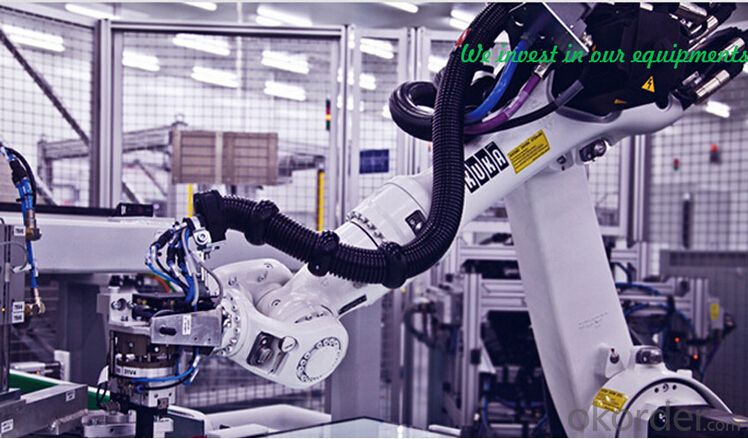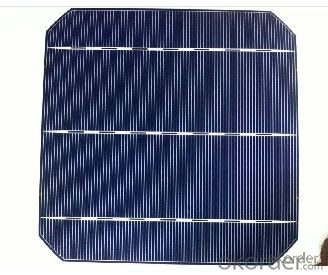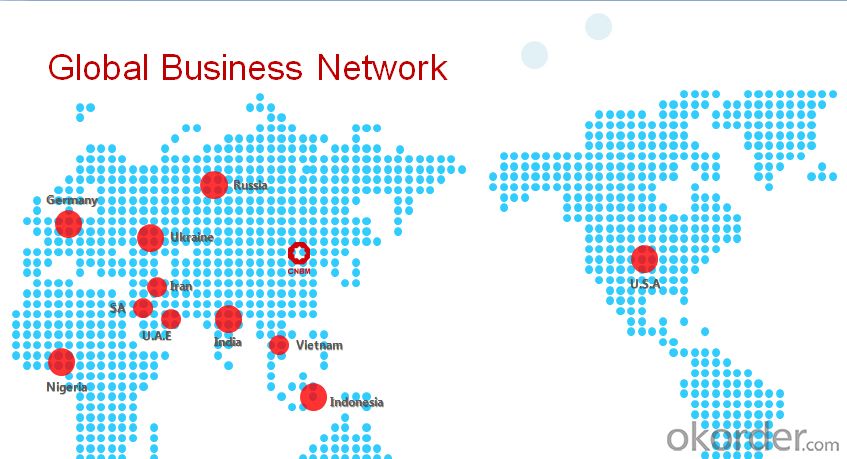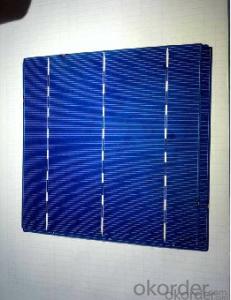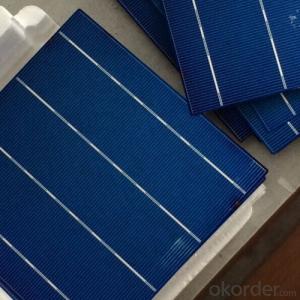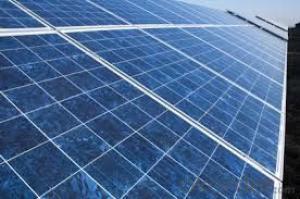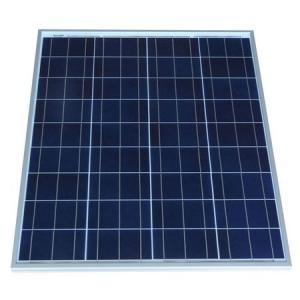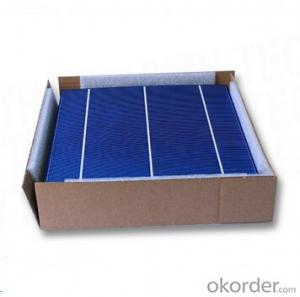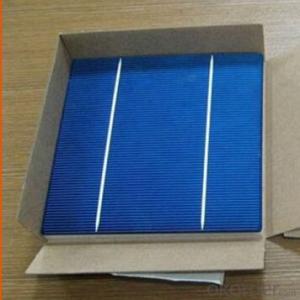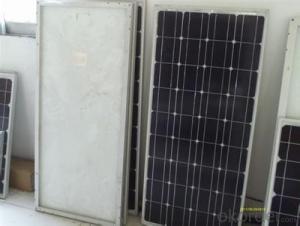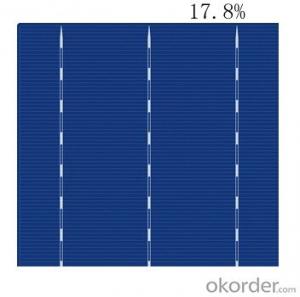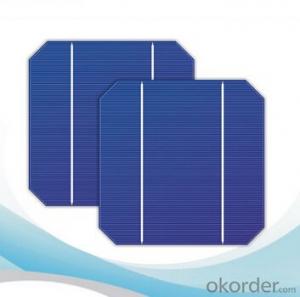Honda Solar Cells - Monocrystalline Solar Cell-Made at Low Price
- Loading Port:
- Shanghai
- Payment Terms:
- TT or LC
- Min Order Qty:
- 100 PCS
- Supply Capability:
- 10000000 PCS/month
OKorder Service Pledge
OKorder Financial Service
You Might Also Like
Advantages of Poly Solar Cells
1.CNBM Solar improves cell-to-module ratio by:
2.Narrowing down efficiency bin range to 0.2%.
3.Defining efficiency bins by minimal power and 97% of current at maximum power.
4.Customers can manage and control module power output distribution.
5.Customers get more value for their money.
6.Long-Term Reliability
7.High Shunt Resistance
8.Low LID (Light-Induced Degradation)
9.Frequent internal monitoring of LID.
Specifications of Mono Solar Cells
Format :125 mm × 125 mm ± 0.5 mm
Thickness: 210μm ± 40 μm
Front (-) :1.5mm bus bars (silver),blue anti-reflection coating (silicon nitride)
Back (+): 2.5mm wide soldering pads (silver) back surface field (aluminium)
Temperature Coefficient of Mono Cells
Voc.Temp .coef.%/K: -0.351%/K
Isc.Temp .coef.%/K: +0.035%/K
Pm.Temp. coef.%/K: -0.47%/K
Usage and Applications of Monocrystalline Cells
Solar cells are often electrically connected and encapsulated as a module. Photovoltaic modules often have a sheet of glass on the front (sun up) side, allowing light to pass while protecting the semiconductor wafers from abrasion and impact due to wind-driven debris, rain, hail, etc. Solar cells are also usually connected in series in modules, creating an additive voltage. Connecting cells in parallel will yield a higher current; Our solar cells have passed IEC Certification. With high quality and stable quality. Our Cells can greatly improve the performance of Solar Modules.
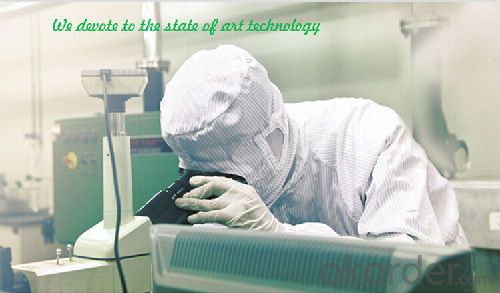
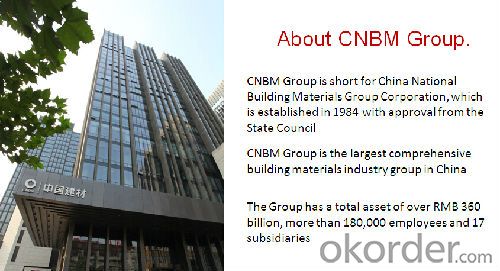
Packaging & Delivery of Monocrystalline Cells
Carton Box Package and Deliver by air. It should be noticed that it should be avoid water, sunshine and moist.
FAQ: What's your products warranty?
•: No less than 90% within 10years and no less than 80% within 25years. Less power decrease.
FAQ: How many kinds of solar cells can we produce?
•: We can supply the normal 2 kinds of solar cells, Poly 156mm*156mm and Mono 125mm*125mm , and the special dimensions also can be produced .
FAQ: What's the efficiency range of the solar cells?
•: We can supply 16.8% to 18.9% efficiency of the solar cells.
Solar cell materials and the part of the function
1) Tempered glass whose role is to protect the main power, the choice of which is light-transmissive requirements: The light transmittance must be high (generally more than 91%); super white steel processing.
2) EVA is used to bond glass and generation fixed body, transparent EVA material directly affect the life of components exposed EVA in the air easily aging yellow, thus affecting the transmittance components thus affect the quality of power generation components in addition to the EVA itself, the quality, the laminating process on the component manufacturers is very large, such as the degree of non-compliance EVA glue, EVA and glass, back bonding strength is not enough, will cause EVA early aging affect component life. The main body and the bonding package power backplane.
3) Cells main function is to generate electricity, the electricity main market is the mainstream crystalline silicon solar cell film, thin film solar cells, both have their advantages and disadvantages. Crystalline silicon solar cells, the equipment cost is relatively low, the photoelectric conversion efficiency is high, outdoors under the sun power is more appropriate, but the consumption is high and the cost of solar cells; thin-film solar cells, battery consumption and low cost, very low-light effect well, in ordinary light can also generate electricity, but the relatively high cost of equipment, photoelectric conversion efficiency of crystalline silicon solar cells is relatively more than half of the points, such as solar calculator.
4) The role of the backplane, sealing, insulation, waterproof (usually with TPT, TPE and other materials must be resistant to aging, most of the components are factory warranty for 25 years, tempered glass, aluminum is generally no problem, the key in the backplane and whether silicone can meet the requirements.)
5) Protection of aluminum laminate, play a seal, supporting role
6) Junction box to protect the entire power generation system, play a role in the current transfer station, a short circuit if the component junction box automatically disconnect the short-circuit the battery string, then the entire system to prevent burn out, the box is the most critical diode selection, according to internal components different types of cells, and the corresponding diode is not the same.
7) Silicone seal for sealing components and aluminum frame, junction box and wiring components Some companies use double-sided tape, foam instead of silicone, domestic widespread use of silica gel, the process is simple, convenient, easy to operate, and the cost low.
- Q: How do solar cells perform in areas with high levels of water pollution?
- Solar cells can experience a decrease in performance in areas with high levels of water pollution due to the reduced sunlight reaching the cells. The pollutants in the water can absorb or scatter sunlight, leading to lower solar panel efficiency and energy output. Additionally, water pollution can also corrode the surface of solar panels, further affecting their performance. Therefore, regular maintenance and cleaning of solar panels are crucial in such areas to ensure optimal functioning.
- Q: Can solar cells be used on curved surfaces?
- Yes, solar cells can be used on curved surfaces. Advances in technology have enabled the development of flexible and bendable solar panels that can conform to curved or irregular shapes, allowing for their installation on various surfaces such as rooftops, vehicles, and even clothing.
- Q: How do solar cells perform in areas with high levels of dust?
- Solar cells tend to perform less efficiently in areas with high levels of dust. The dust particles can accumulate on the surface of the solar panels, reducing their ability to absorb sunlight and convert it into electricity. This buildup can lead to a decrease in energy production and overall performance of the solar cells. Regular cleaning and maintenance of the panels are necessary to mitigate the impact of dust and ensure optimal efficiency.
- Q: What is the role of solar cells in powering outdoor lighting?
- The role of solar cells in powering outdoor lighting is to convert sunlight into electricity. Solar cells, also known as photovoltaic cells, capture the sun's energy and convert it into usable electrical power. This power is then stored in batteries, which can be used to illuminate outdoor lights during the night. Solar cells eliminate the need for traditional electrical power sources, making outdoor lighting more environmentally friendly and cost-effective.
- Q: How do solar cells handle power factor correction?
- Solar cells do not handle power factor correction directly. Power factor correction is typically handled by other components in a solar power system, such as inverters or power conditioning units. These components are responsible for converting the DC power generated by solar cells into AC power that can be used in electrical systems. Power factor correction is important to ensure efficient utilization of electrical power and reduce energy losses in the system.
- Q: What is a solar cell?
- A solar cell, also known as a photovoltaic cell, is a device that converts sunlight directly into electricity using the photovoltaic effect. It consists of a semiconductor material that absorbs photons from sunlight, generating an electric current as a result.
- Q: Can solar cells be used on boats?
- Yes, solar cells can be used on boats. They are a popular and sustainable source of energy for powering various systems on boats, including lighting, navigation equipment, and charging batteries. Solar panels can be easily installed on the deck or roof of a boat to harness sunlight and convert it into electricity, reducing the reliance on traditional fuel sources and offering a clean and renewable energy solution.
- Q: Can solar panels be charged with light?
- Since the output power of solar modules depends on factors such as solar irradiance and solar cell temperature, it is not recommended to use light charging, efficiency is not only very low, and also meaningless.
- Q: What is the usage of solar cells?
- Solar cells can generate power supplies for households and factories where there is a need for a lot of energy.
- Q: Can solar cells be used to power agricultural irrigation systems?
- Yes, solar cells can be used to power agricultural irrigation systems. Solar panels can convert sunlight into electricity, which can be used to power pumps and other equipment necessary for irrigation. This renewable energy source can provide a sustainable and cost-effective solution for powering irrigation systems in remote or off-grid areas.
Send your message to us
Honda Solar Cells - Monocrystalline Solar Cell-Made at Low Price
- Loading Port:
- Shanghai
- Payment Terms:
- TT or LC
- Min Order Qty:
- 100 PCS
- Supply Capability:
- 10000000 PCS/month
OKorder Service Pledge
OKorder Financial Service
Similar products
Hot products
Hot Searches
Related keywords
